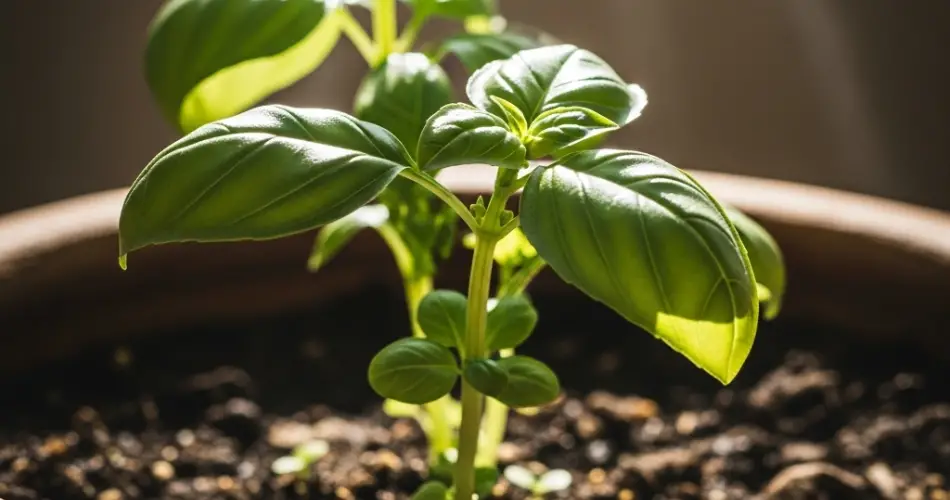Basil is one of the most popular herbs around—and for good reason. It’s fragrant, flavorful, and easy to grow, even if you don’t consider yourself a gardening expert. Whether you want to top off pasta dishes with fresh leaves or make your own homemade pesto, having a thriving basil plant at your fingertips is both satisfying and useful.
The best part? You can grow basil from seed to full, lush beauty in just a few weeks. With the right approach, your basil can go from soil to harvest-ready in record time. Here’s how to do it, step by step.
1. Choose the Right Seeds
There are many varieties of basil, but for fast growth and great flavor, start with Genovese basil—a classic choice for culinary use. You can also experiment with lemon basil, Thai basil, or purple basil if you’d like variety later on, but Genovese is ideal for first-time growers.
Make sure your seeds are fresh. Old or improperly stored seeds may germinate poorly, slowing down your progress from the start.
2. Pick a Warm Start
Basil loves warmth. For the quickest results, start your seeds indoors where the temperature stays consistently between 70–80°F (21–27°C). Use seed trays, small pots, or even recycled containers (just make sure they have drainage holes).
Fill each container with a light, well-draining seed-starting mix. Avoid heavy garden soil, which can compact and hold too much water.
Sow the seeds on the surface and press them lightly into the soil—no need to bury them deep. Basil seeds need light to germinate, so just barely cover them with a dusting of soil or vermiculite.
Water gently, just enough to moisten the soil.
3. Create the Perfect Germination Conditions
Cover the containers with plastic wrap or a humidity dome to lock in moisture. Place them in a warm, bright location—near a sunny window or under grow lights. If you’re serious about speed, a heating mat underneath the tray can boost germination rates.
Basil seeds typically sprout within 5 to 10 days, sometimes sooner under ideal conditions.
As soon as seedlings appear, remove the cover and move the tray to a bright spot with at least 12–14 hours of light each day. If natural light is limited, supplement with grow lights to avoid spindly, weak seedlings.
4. Thin and Transplant for Strength
When the seedlings develop their first set of true leaves (the second set after the initial seed leaves), thin them out. Leave the strongest plant in each pot or cell and snip the others at the base with scissors to avoid disturbing roots.
Once your seedlings are about 3–4 inches tall and nighttime temperatures are consistently above 55°F (13°C), it’s safe to harden them off and move them outdoors. Do this gradually over a week: place the seedlings outside for a few hours a day, increasing time and sun exposure gradually.
Transplant into garden beds or larger pots with rich, well-draining soil and full sun (at least 6 hours daily). Space plants about 10–12 inches apart for optimal airflow and size.
5. Water and Feed for Speed
Basil grows quickly with regular water and light feeding. Keep the soil consistently moist but not soggy. Water deeply when the top inch of soil feels dry.
Every 2–3 weeks, feed your basil with a balanced liquid fertilizer diluted to half strength. Over-fertilizing can lead to lots of leaves but weak flavor, so don’t overdo it.
6. Pinch for Bushier Growth
Here’s the secret to stunning basil in record time: pinching. When your basil reaches 6–8 inches tall, pinch off the growing tip just above a leaf node. This encourages the plant to branch out instead of growing straight up.
Repeat this every couple of weeks and you’ll soon have a full, bushy plant loaded with leaves. Never be afraid to harvest—it actually makes basil grow faster and fuller.
7. Harvest Smartly
Begin harvesting as soon as the plant has plenty of leaves—usually within 3–4 weeks of transplanting outdoors. Always harvest from the top and cut just above a leaf node. This will encourage new branches to form.
Avoid removing more than one-third of the plant at a time. Regular harvesting keeps basil productive and delays flowering, which can make the leaves taste bitter.
If flowers begin to form, pinch them off immediately to keep the plant focused on leaf production.
Final Tips
-
Grow in succession: Plant a new batch of basil seeds every 3–4 weeks to enjoy a continuous harvest throughout the season.
-
Companion planting: Basil pairs well with tomatoes, repelling some pests while enhancing the flavor of your garden tomatoes.
-
Indoor basil: With enough light, basil can thrive indoors year-round, especially on a sunny kitchen windowsill.
Conclusion
Growing basil from seed to vibrant, full-grown plants isn’t just possible—it’s fast and fun with the right steps. From warm germination to strategic pinching and smart harvesting, you’ll be amazed how quickly basil transforms from tiny seeds to a culinary powerhouse. Give it a try, and you may never buy supermarket basil again.



